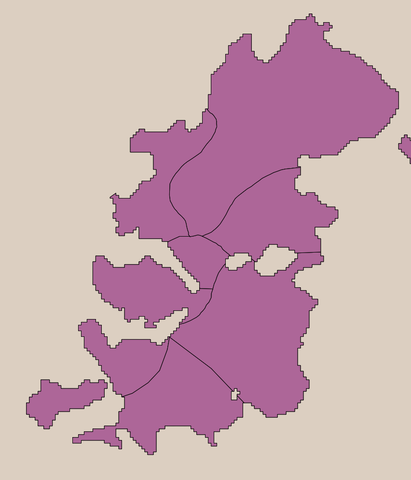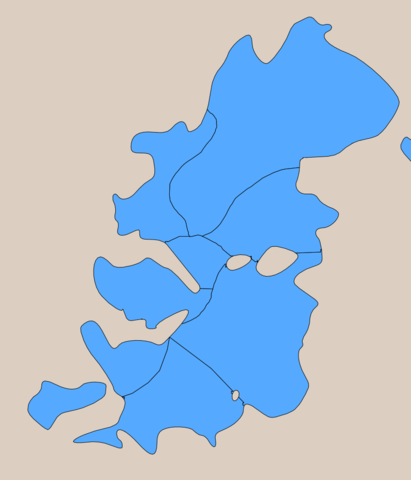GLIMS Glacier Database
The Global Land Ice Measurements from Space (GLIMS) is a global project of mapping glaciers. Primary data sources are maps, often quite old and newer ASTER and Landsat images. The data is acquired from many institutions around the world using different methods and different tools and the quality of data therefore varies significantly.
Data access
The GLIMS database is hosted and maintained by the NSIDC, the main entry page there is:
http://nsidc.org/data/nsidc-0272.html
data access including the full database dump can be downloaded from
http://glims.colorado.edu/glacierdata/glacierdata.php
There is also a separate domain glims.org containing various further information like:
License
The NSIDC has confirmed that GLIMS data is in the public domain:
GLIMS data are public domain so you may use it how you wish. However, we recommend the following format for a general citation for the entire GLIMS data collection: Richard Armstrong, Bruce Raup, Siri Jodha Singh Khalsa, Roger Barry, Jeff Kargel, Chris Helm, Hugh Kieffer. 2005. GLIMS Glacier Database. [indicate subset used]. Boulder, Colorado USA: National Snow and Ice Data Center. Alternatively, if you download a specific data set, please use the appropriate citation(s) listed in the file called 'CITATIONS_nnnn.txt' (where nnnn is a number) for the specific GLIMS data you use.
There is also a newer citation from http://www.glims.org/About/citations.html
This file contains the citations for the data downloaded from the GLIMS Glacier Database. All data are in the longitude/latitude coordinate system on the WGS-84 datum. Field names in the downloaded file are documented at http://www.glims.org/MapsAndDocs/downloaded_field_desc.html When citing GLIMS data, please be sure to include all the information in the examples below, including the analyst's name. When referring to the GLIMS Initiative in general, please cite Raup, B.H.; A. Racoviteanu; S.J.S. Khalsa; C. Helm; R. Armstrong; Y. Arnaud (2007). "The GLIMS Geospatial Glacier Database: a New Tool for Studying Glacier Change". Global and Planetary Change 56:101--110. (doi:10.1016/j.gloplacha.2006.07.018) For the complete set of GLIMS glacier data (when using it for a global study of glaciers, for example), please cite GLIMS and NSIDC (2005, updated 2018): Global Land Ice Measurements from Space glacier database. Compiled and made available by the international GLIMS community and the National Snow and Ice Data Center, Boulder CO, U.S.A. DOI:10.7265/N5V98602 For Analysis_IDs in the range 309497--312426, the appropriate citation is Cogley, Graham (submitter); Kienholz, Christian; Miles, Evan; Sharp, Martin; Wyatt, F. (analyst(s)), 2015. GLIMS Glacier Database. Boulder, CO. National Snow and Ice Data Center. http://dx.doi.org/10.7265/N5V98602
Data structure
The full database dump is a huge shapefile containing ice and internal rock polygons separately. The shapefile also contains many duplicate polygons and the attributes seem partially broken.
Data quality
The quality of the data is strongly varying due to the different sources and analysis methods used. The following is by initial assessment (completeness is only a rough estimate)
| region | age of the data source | completeness | quality of the data | better than current OSM |
|---|---|---|---|---|
| Alps (west) | 1998 | no | good except for poor vectorization | partly |
| Alps (east) | 1985/~2000 | no | partly poor vectorization | partly |
| Caucasus | ~2000 | mostly | good | yes |
| Scandinavia | ~2000 | yes | good except for poor vectorization | yes |
| Svalbard | 2000-2010 | no | good except for poor vectorization | yes |
| Iceland | ~2000 | yes | good | yes |
| Greenland | ~2000 | no | bad | no |
| Pamir | 2001-2003 | no | good | yes |
| Hindu Kush | 2000-2005 | maybe | good | yes |
| Tibet | 1960-1975 | unsure | good but not very detailed | yes |
| Karakoram (part of) | 2000-2005 | no | good | in parts covered |
| Eastern Himalaya | 1960-1975 | no | good but not very detailed | where covered |
| Tian Shan | 1959-1975 | no | good but not very detailed | yes |
| Altai | 1959/2000-2005 | no | varying | partly |
| Russian far east | 2000-2005 | no | good | yes |
| Kerguelen | 1965/1994/2000 | yes | varying | yes |
| Patagonia | 2007 | no | good | only where covered |
| northern Peru (small area) | 2003 | yes | good except for poor vectorization | yes |
| cont. US | 1950 | yes | moderate | yes |
| Alaska | 2005-2010 | no | good except for poor vectorization | where covered |
| Canada | varying | no | varying | mostly but probably worse than Canvec |
Vectorization issues
Some of the better data in GLIMS, notably that in northern Europe and Alaska, is hampered by poor vectorization of a raster data source. To properly import this into OSM would require newly vectorizing it which is especially difficult where there have been manual edits in the GLIMS data. Below is an example from southern Norway

|

|
| Original GLIMS data | with newly vectorized outline but trying to keep the original internal division |